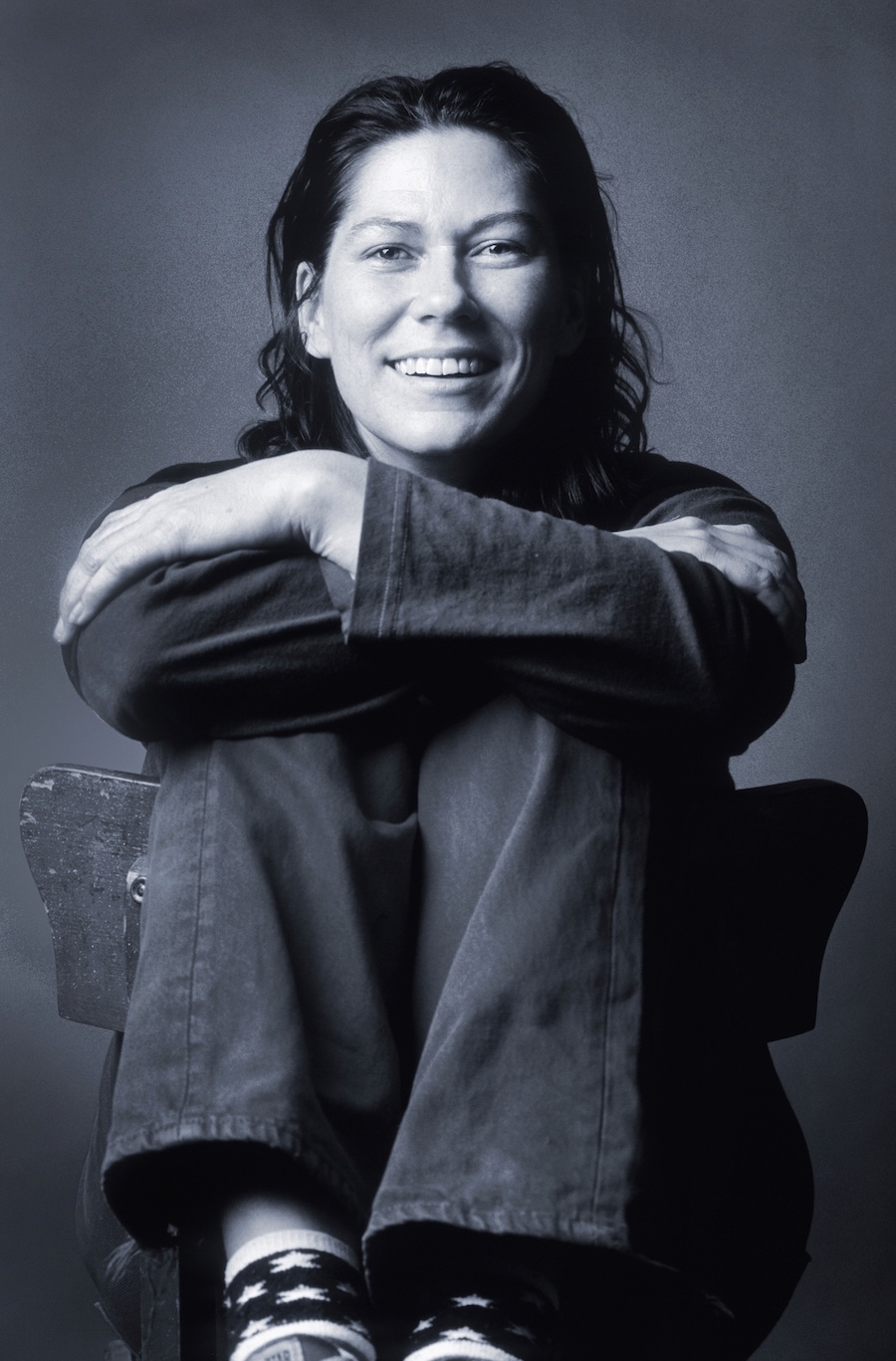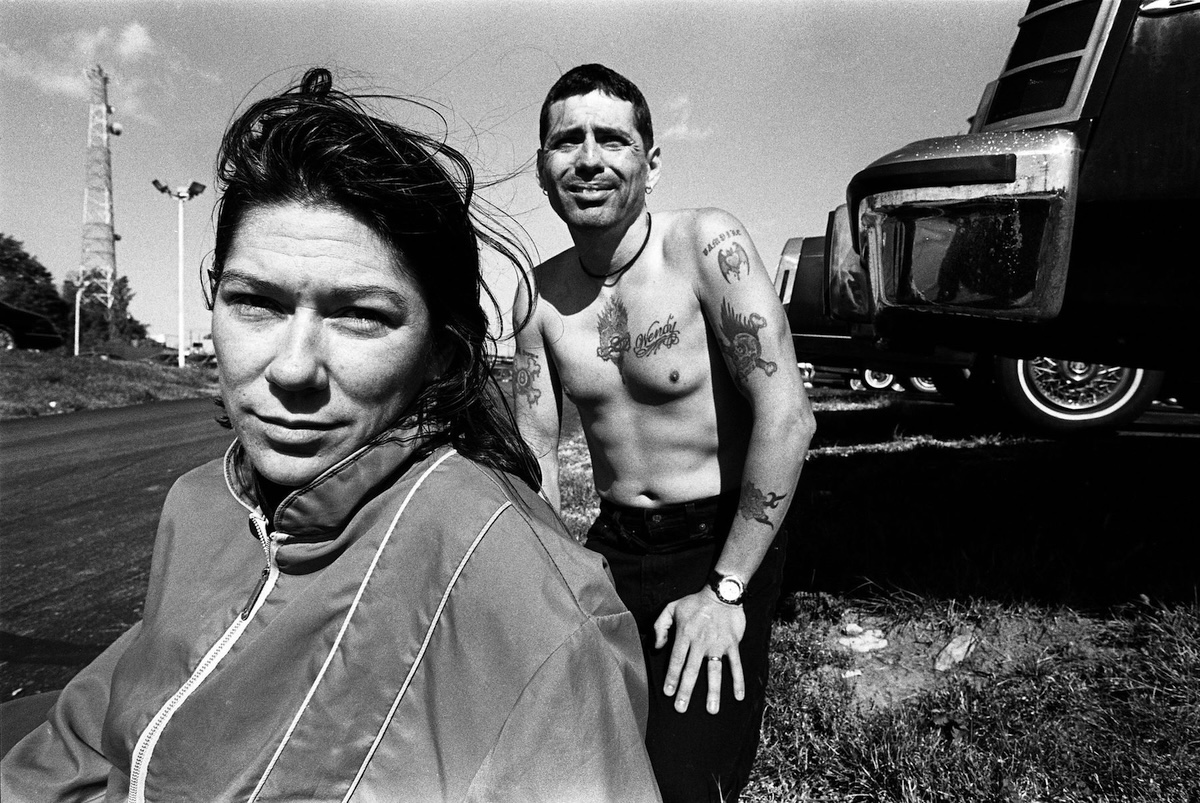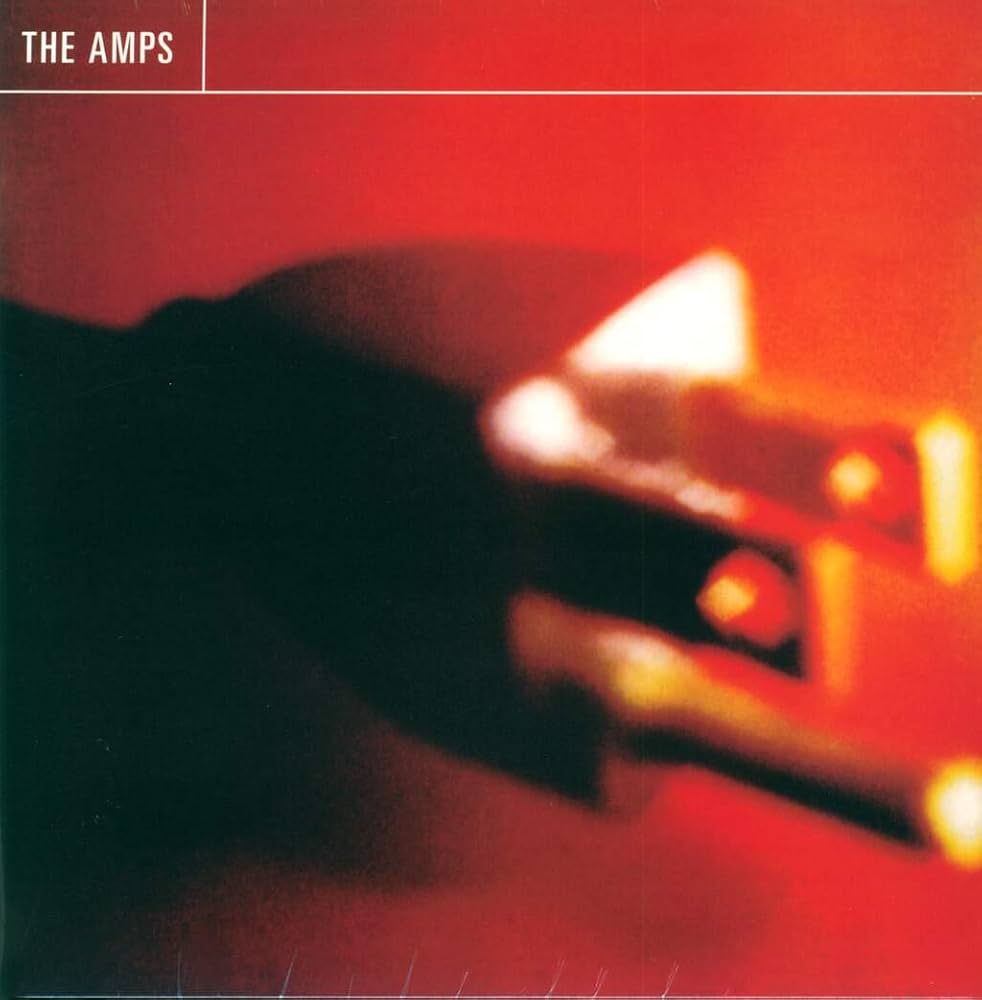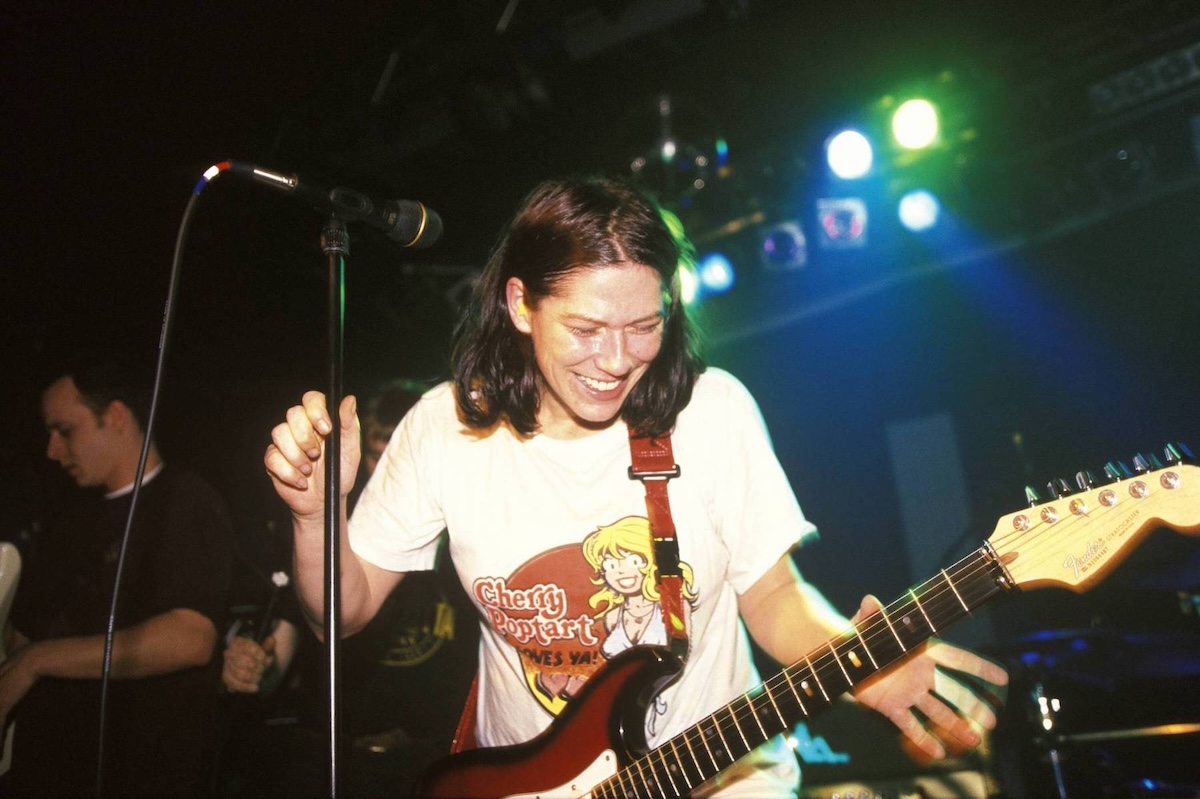Kim Deal has survived a lifetime of comparisons against her own work, with the Pixies, with the Breeders, or with or without her sister. Pacer was an album that got beat up like some weird kid on the playground, upon its October ‘95 release. It stands to reason that if Pacer were the only album Kim Deal had ever put out, it would be considered a cult classic today.
It’s a bit bruised up. I’m not here to tell you this record is perfect. It’s not. But even the raw bumps in Pacer are like hitting gravel on the road to a backyard party; it’s all part of the ride. It was the first and only album by the Amps, an experiment Deal kept in motion for nearly two years, to the chagrin of music industry puds.
More from Spin:
- Beach Boys Mastermind Brian Wilson Dies At 82
- Turnstile Taking ‘Never Enough’ On Tour
- On Their First Album In 24 Years, We Need Pulp ‘More’ Than Ever
“People were saying, “The Breeders just sold a million units…you’re gonna load your Marshall in the car and play regional shows?” and my answer was “YES.” That’s basically what I wanted to do. And drink. But mostly just drink,” Deal smiles.
That said, it’s hard to give an exact account of the Amps. They were a rambunctious, ornery lot. Kim Deal is the first to admit this. “I was super usey in those days, so I can’t remember all of what happened.”
To celebrate Pacer’s 30th anniversary, I spoke to Deal, Jim Macpherson, Nate Farley, and Luis Lerma to get a better picture of the album and its tours. From these talks sprang legends untold: mobs in the streets of Spain, booze benders that scared the Irish, and love lives that kept humming long after the Amps were turned off.
The band formed in a mythical time in Dayton, Ohio, when Guided by Voices, Brainiac, and Swearing at Motorists were playing around town. How did this all start?
Kim Deal: In 1995, the Breeders were on hiatus. I was just gonna do a solo record in my basement, but then Jim started coming over, which was great, because I needed drums.
Jim Macpherson: Kelley [Kim’s twin sister] invited me over to Kim’s house and when we got there, she was in the basement recording. So we kind of elbowed our way down there.
KD: I’d sit on his drum kit and have a basic beat and go (tapping out rhythm on her lap), “Hey Jim, could you play that?” And then I would record him and build up the song and then get the lyrics.
Can you talk about the recording process in those first basement days?
KD: That was the first time I had started writing songs on 4-track. I felt liberated from the SYSTEM. The more I put into trying to get a good recording, the more cables break, the more inputs become intermittent, and pretty soon a lot of energy is put into making sure that everything is technologically working. If something’s broken, I’ll pull out the 4-track, put a cassette in. When I’ve got a good idea, I wanna get it down. And four tracks will do a lot for ya, too. They’ll blow out a bass guitar sound. Four-track on a kick drum? (*chef’s kiss) Beautiful.

After the demos were in place, Jim and Kim headed to Easley Studios for a bigger sound. Those sessions gave us “Breaking the Split Screen Barrier,” right?
JM: Indeed. I did acid and played that song for like three hours. And I basically just kept playing it over and over and over, and they just took what they wanted off of it.
You did those sixteenth notes on a kick drum for three hours?! Holy shit.
JM: For a long time.
“Bragging Party” is the ultimate car song. Did you guys ever field test stuff by cruising around and listening to the roughs in the car?
JM: Yeah we would, on some of them.
KD: That one turned out really good. It was written about my sister. She was struggling so much with the drugs, I was just willing her to just stay alive, to take another breath, breathe. She knows that it’s about her, and about that. To me, that’s a special song that shows my love for my sister.
Where were the next tracks?
KD: We finished up the first batch of songs at Albini’s old studio in Chicago. We did “Empty Glasses” and “Hoverin’.”
JM: The song title was fitting. In Albini’s basement my shoes would stick to the basement floor because we were all drinking Barenjager, this honey liquor. It was like quicksand, I couldn’t move.
KD: We had some more songs, but what I wanted more than that was to keep playing music. I was in Dayton, Ohio, so I got a couple of players in town, Nate and Luis, guitar and bass.
Nate Farley: I had filled in for Tobin Sprout on a recent GBV tour. Initially, Kim wanted Bob Pollard to play guitar. GBV were taking off, so Bob said, “Get Nate to do it.” So Kim and I are drinking beers and playing pool and she said, “Hey, I’m starting this new band, do you wanna join?” And I was like “Well, fuck yes.” We got Luis after that.
Luis Lerma: I guess Bob Pollard was a fan of mine and he knew of my work, so he mentioned it to Kim. I got married, and then the next day Kim called me to join the Amps. It was pretty cool.
NF: Luis was older and had played for the OG first wave of Dayton punk bands. He was in the Dates, the Tasties, everybody knew him as the nicest guy in the world.
Sounds like he was the Pat Smear of Dayton.
NF: He totally was.
LL: Actually, by the time we toured with Foo Fighters, a lot of people thought me and Pat Smear were brothers.
NF: So now we had the whole group down in Kim’s basement, she threw more songs at us, we practiced every single day.
KD: I needed more songs. So we started playing out.
The original name for the group was Tammy Ampersand and the Amps, and some of the lyrics refer to Tammy. Was this ever going to be a concept album?
KD: Absolutely. Yes. Because I was Tammy, and I wasn’t playing with anybody, just the amplifiers. So it was Tammy and the Amps. They were my back-up band. I’d go into the bars and people would yell, “Tammy!” But I was hearing that name a little too much in those days.
Tammy and the Amps played their first show on June 17 at Stache’s in Columbus, Ohio. Kyle Siegrist, owner of Lost Weekend Records was there.
Kyle Siegrist: They weren’t even on the bill. I wrote “Tammy and the Amps” on the ticket later on. I just happened to be going to Stache’s to see GBV. Kim was really wasted, but so was I.
JM: Wait, we played Stache’s? …with the Amps?
You did. Opening for Guided by Voices.
JM: …and we played with GBV? Oh my God, I must’ve been blacked out.
NF: We were all in our cups pretty good back then.

And then you guys went to Ireland?
KD: And then I went to Ireland, I don’t fucking know why. I really can’t tell you why.
NF: Kim said that we needed to record. To be 23 years old and have Kim Deal say to you, ‘we’re gonna move to Dublin, Ireland, for a while and record’, it’s like, “Um, yes.”
The quartet went to Windmill Lane Studios, where the Cranberries had previously recorded.
JM: I remember us having a lot of issues with the recording guy in Ireland.
KD: Back home, I’ve got this ZZZZZSSSHHHH, really smashed high-compressed cassette that sounds exciting. Then I would take this demo, let’s say, and then I would take it to a studio! In Ireland! And this house engineer guy just couldn’t get it down. We’d all play it like normal and it would sound. So. Wimpy. I had gotten used to the gain structure on the 4-track. And you can’t just add distortion, it doesn’t sound like that.
LL: Kim was pretty frustrated. It was rough for us. It was her creativity, we were there to support her.
KD: I am used to these battles of will with house engineers! And I’ll never stop. Ever! It’s just not gonna happen. And I’m paying, so why not? So that’s what Pacer is to me, basically. Just a battle of wills dealing with house engineers.
How were things outside of the studio in Dublin?
NF: We were always at the pub and we really got immersed in the whole Dublin culture.
JM: Me and Kim went to a bar before we went to record. We were dancing and I was swinging my arms back and forth and I cut open my arm on some glass. So I had to go to the ER in Dublin and had to get all these stitches in my arm. They weren’t gonna stitch me up because I was so drunk.
Then fast forward another week, we played a show in town and at the end of the show I started smashing my drums. And I grabbed the floor tom and one of the leg spikes split my head open. So I went back to the same hospital, same emergency room, same doctor and I was twice as drunk this time. And he’s like “HELL NO.” He made me sit out in the waiting room for a while to sober up before he stitched me up again.
You have to be pretty drunk if an ER doctor in Ireland, one of the drinking capitals of the world, thinks you’ve had too much.
JM: I never thought of it that way (laughs).
LL: Then after Ireland, we had a little tour ending in London.
NF: I was just a kid and I low-key tried to hit on Chrissie Hynde in our dressing room in London. She just looked at me and said “I think I hear your mom calling.”
After the U.K. stretch, the group kept recording with live dates in between. By this point, their name had been shortened to the Amps.
NF: We had gone to a lot of studios and just grabbed the best takes for the album.
KD: I was a terror. Nowadays, I look back and think, “What a weirdo. First of all, put the beer down. Next, make sure you hire and get to know somebody who you like when it comes to engineers.”
In L.A., the band finished up at Conway Recording. The studio ran round-the-clock shifts with musicians and engineers, 24 hours a day. Deal’s former Pixies bandmates Joey Santiago and David Lovering showed up to wish Kim well and hang out during a session.
NF: That place was nuts. We were in Studio B and in Studio A, Lionel Richie was making his comeback. I was sitting on the floor messing with a double tape deck, and I take my headphones off and turn around and Lionel Richie had been standing there watching me the whole time. And I was like, “What the fuck?” (laughs).
LL: There was a break room where we could get bagels. I had a bagel and all I heard was “Mr. Richie’s entering the room.” “Okay, awesome. Should I leave?”

The album was released with cover art from 4AD master designer Vaughan Oliver.
NF: Mostly.
Mostly?
NF: Vaughan mocked up artwork that was kind of like a plug, with all the wires and stuff. And Kim showed me and said, “What do you think?” and I said it kinda reminded me of the MTV 120 Minutes logo. She said, “Fuck that,” took a Polaroid of a plug and sent that to Vaughan. He still made it into something amazing.
After the release, Elektra gave custom Marshall MS-4 micro stacks to the band. Music videos were shot and a rigorous travel schedule followed. That December, the once-regional “local” band found themselves playing Europe, some East Coast dates, and a full jaunt of Australia, all within the span of a month.
NF: It was always fun. I mean, we had a bus. Kim was not wanting to ride around in a van.
LL: We were booked in Barcelona. Unbeknownst to me, there was an election for a Prime Minister, and his name was Luis Lerma. And I guess his son was running, and that guy’s name was Luis Lerma.
I had this ritual where I’d get right back into my pajamas and chill on the bus after we played. Before I got outside, the record label rep appeared, “Now Luis, don’t panic.” And I said, “What’s wrong?” and he said, “Just go outside, just say hi.” And I could barely speak Spanish. I go out and there’s this crowd, “AAAHHHH!!!!!” So I just had a pen and I’m making X’s on papers and they’re ripping at my clothes, and I was thinking, “What the hell is going on?” So the label guy whispers to me, “They think you’re Luis Lerma, the Prime Minister’s son.” So we get on the bus and my hair’s all mussed and everyone’s like, “What happened, Lou?” All of a sudden the people started shaking the bus. So I yell, “Take off! Take off! Go GO GO!” and the bus pulls out of there. We’re down, maybe three lights, sitting at a red. And then we hear this ROAR, and they were following the bus. These people really thought the Prime Minister’s son was in the Amps.
After the Euro leg, the band played a handful of East Coast shows before joining Summersault, the Australian answer to Lollapalooza. The lineup across two stages was Bikini Kill, Jawbreaker, Sonic Youth, Rancid, Beck, Pavement, Foo Fighters, and the Beastie Boys. And the Amps.
NF: We leave from San Francisco to go to Australia for this, and we are all on the same airplane.
And we’re all thinking the same thing, we didn’t wanna say it, but this is the entire world of indie rock on this 12-hour flight. I don’t know if I would have booked it that way. If that plane went down, it’s like, The Day the Music Died times a hundred (laughs).
LL: The people on that tour, man.
NF: Rancid, of all people, were in first class. They were the only band up there. And we just heckled them the whole time, “You mother fuckers!” That was the last time they flew first class (laughs).
LL: On New Year’s, the Beastie Boys invited all of the bands on stage with them.
NF: We all got up and did the worst rendition of “We Are the World.” No one knew the words, but everyone knew the chorus. I’ll never forget that trip; when we toured in the States, you’d always have some friends or family show up or tag along, but on Summersault, we only knew each other. One of the coolest things in my life was going to a flea market with Adam Yauch and just looking through records.
The band played Conan after their return, then toured throughout 1996 with Foo Fighters, the Tasties, Brainiac, and more. Album sales were just okay, which was endemic for bands on Elektra. By the end of that year the Amps were playing as the Breeders again.
LL: Blood is thicker than water. Kelley would come back to shows and we would play Breeders songs and the Amps.
NF: It had morphed from the Amps into the Breeders just so we could add a bunch more Breeders songs and probably get some bigger crowds.
When did it look like the Amps might not work out?
KD: I mean, Jim quit.
Can you talk about that a bit?
KD: After we did some shows in Los Angeles, I walked downstairs and all his drums were gone. And I thought to myself, “what’d I say?” Because I couldn’t remember. And we don’t know why we were mad. And he was drinking really bad and I was drinking really bad.
JM: I think I was the one having a definite mental breakdown, just overindulging. I blamed everyone else, but I came to realize it was me. Of course it was. At the time, I didn’t realize that. It’s much easier to point the finger at anyone else than at yourself.
NF: It was starting to get unfun all the way around. I know Jim was over it.
KD: I just felt like, “I’m in trouble.” And I was drinking, so I had no coping skills or emotional intelligence to have the cogent thought of, “Hmm, this is probably something I should talk about with Jim.” It was just reptilian brain thinking, then.
NF: I played in the band under the name the Breeders, but that band isn’t really the Breeders without Kim and Kelley together.
Kim and I stayed in L.A. to mix a live album that we did as the Breeders. It was never released and it’s fucking amazing. We mixed it at Sunset Sound every day and then Tim from Brainiac died.
The band immediately returned home to be with their people. The death of Timmy Taylor cast a pall over the Dayton music community and the indie rock world overall. During the summer hiatus, Lerma left the Amps.
NF: It was hard, man. Everyone was just wrecked.
LL: I left after Jimmy Mac, because I had my own band and wanted to do my own thing. They got Tyler from Brainiac on drums for a bit.
NF: Tyler, me, and Kim went to New York and started working on new songs. Things just were not going well. Tyler ended up leaving and then we got Steven Drozd from The Flaming Lips to come in and play drums for some demos.

Was there an incident that made you leave?
NF: Naw, we just kind of fizzled out. I went home and Kim stayed there.
KD: I should’ve fucking stopped doing music and just had a rest.
The Amps have since gained cult status among low-fi droogs. Pacer still sounds like a Ronettes album if it were made by demons, snaking through local bars and consuming every weak liver in its path. While theirs may seem like a cautionary tale, it must be remembered that some of their peers never made it out of the ’90s alive. The points of light that emerged from the Amps saga are indeed there, with beams that have stretched on for years.
Towards the end, the “Breeders” Amps played the Huntridge Theater in Vegas. Luis Lerma remembers being struck by the audience. “These people had dark hair, green eyes, dark skin but with freckles, and so did I. They were wearing leather jackets, so was I.” After the show, the mystery crowd packed the band’s dressing room to near capacity. “They said, ‘We’re called the M’irish. All of our families have Mexican and Irish descent. You are now an honorary member of the M’irish community here in Las Vegas.’” Lerma reflects on finding his people while out on the road. “It was awesome. I feel like they are all my cousins.” Lerma continues to write and record with Team Void, an undead lucha band cursed to rock the living.
In the case of Nate Farley, leaving the Amps behind changed his life. He took a job waiting tables at the Dayton Art Institute and found renewed joy in the restaurant business in ways that he never expected. “I’m at work this one day. And this woman Sasha came in with a friend of mine.” He beams, “26 years later, she’s still my wife. I wouldn’t be alive without her.” Farley became a celebrated chef and now works in specialty produce sales.
According to Kim Deal, she and Jim Macpherson didn’t speak, “for about 15 years. Not since 1997.” It wasn’t until Deal was getting the Last Splash version of the Breeders back together that she and her sister made plans to reach out. The two reunited and remain friends to this day. Macpherson played drums on “A Good Time Pushed” for Deal’s recent solo record, Nobody Loves You More; they recorded it with Steve Albini in 2022, clean and sober. No shoes were stuck to the floor.
For a little side project from a basement in Dayton, the legacy of the Amps is downright cartoonish in its grandeur. I ask Deal if she’d ever make an animated musical from the story of Tammy and the Amps. She throws her head back and cackles, “HA! Yes! We could just show Tammy getting mad at all the house engineers throughout the land.”
To see our running list of the top 100 greatest rock stars of all time, click here.



